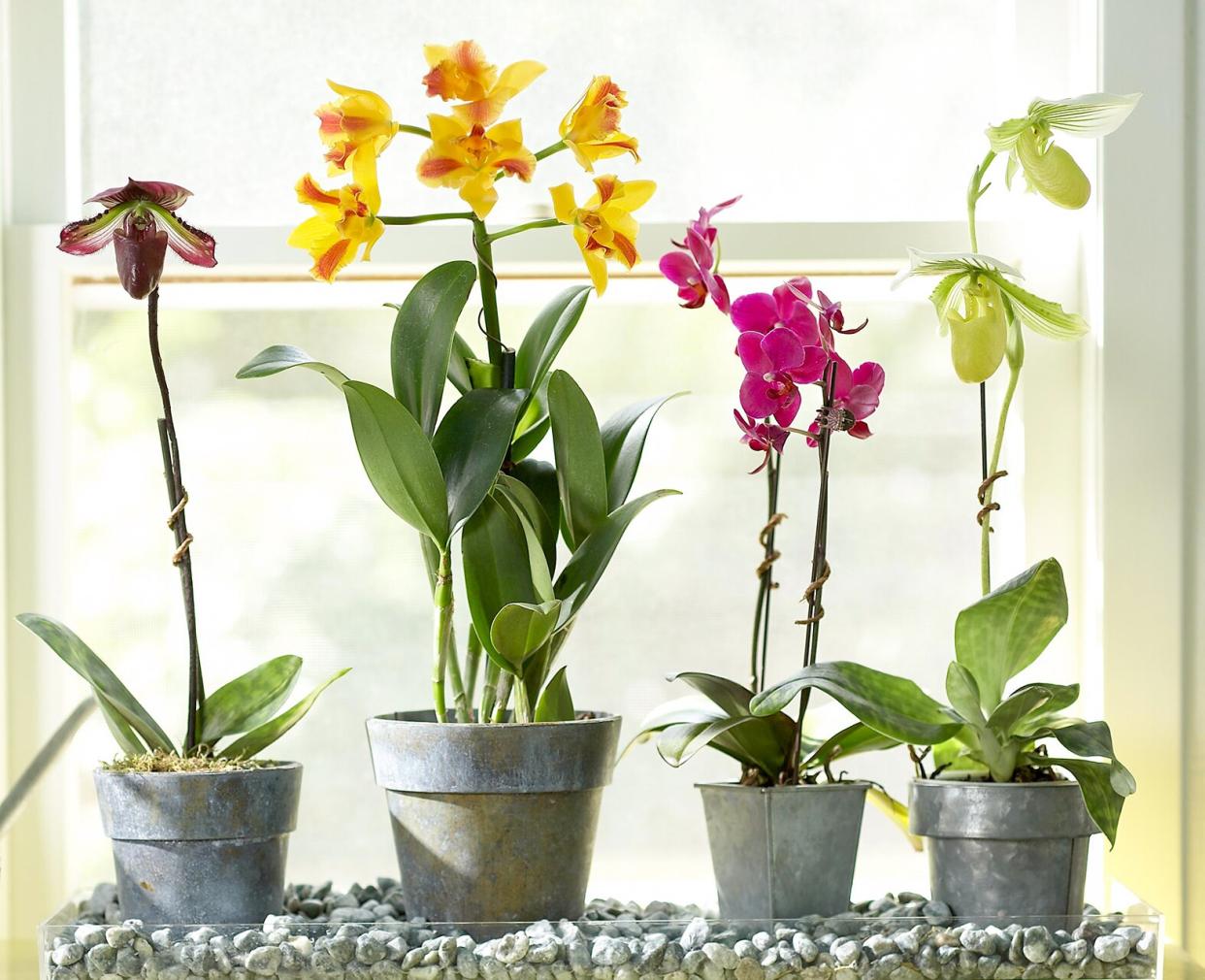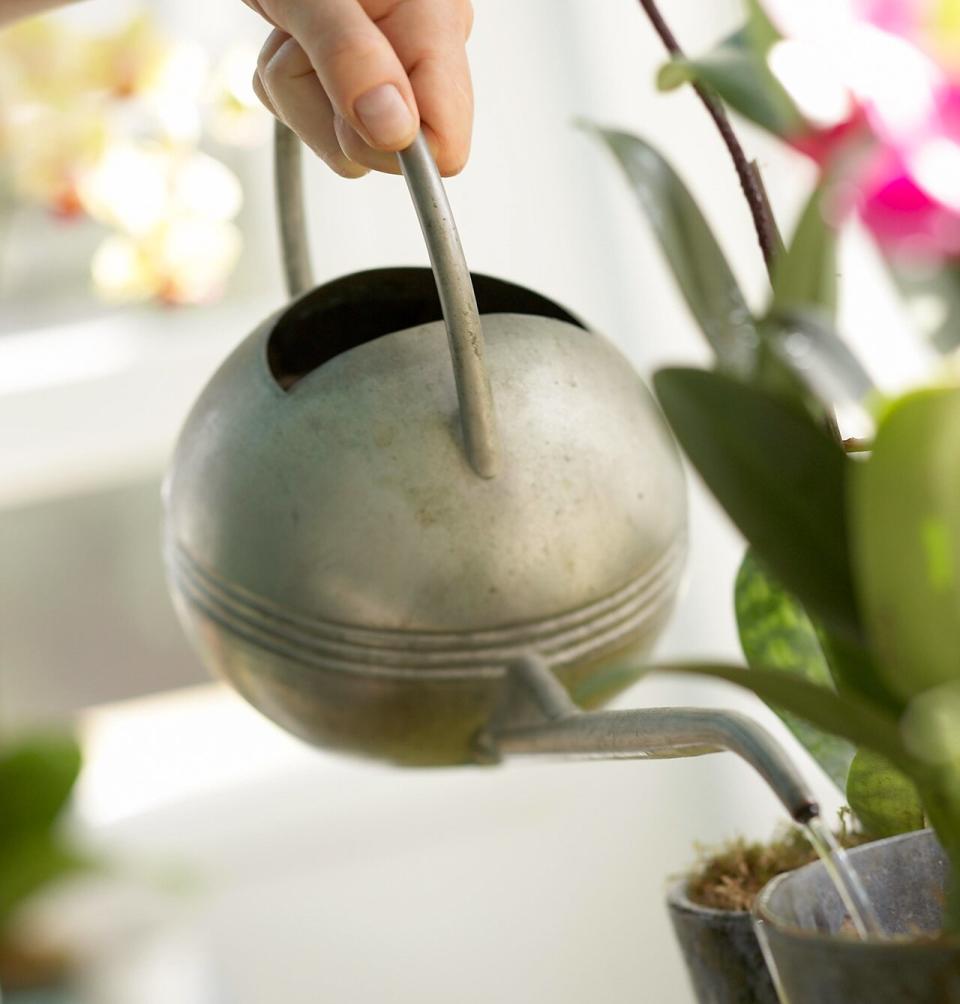Orchid Watering Tips for Beautiful Blooms and Healthy Growth

Watering orchids is more of an art than a science, a task that becomes easier as you get to know these beautiful blooming plants. You'll notice potted orchids are usually grown in bark chips or moss rather than the potting soil you use with other houseplants—which is your first clue that orchids have some special hydration needs. As with caring for any plant, it's important to avoid giving your orchids too much or too little moisture if you'd like a long-term relationship with them. These tips will help you avoid common watering mistakes, so you can keep your orchids happy and thriving.

Peter Krumhardt
How Much Water Do Indoor Orchids Need?
In general, the types of orchids most commonly grown as houseplants come from tropical regions of the world, but that doesn't mean they like constant dampness. And rather than growing on the ground in soil, these tropical orchid species are actually epiphytes (plants that grow on other plants or trees). That means their roots work a little differently than the roots of your other indoor plants, which is why orchids won't appreciate being planted in regular potting soil. Orchid roots need more air (they can even photosynthesize like leaves do in sunlight) and the chance to dry out between waterings. So if you're wondering how much water to give your orchids, it's better to give them too little rather than too much.
When to Water Orchids
How often should you water orchids? It depends on a number of factors, including how warm it is in your house, how much light the plants get, the potting medium, even the type of container your plants are growing in. Rather than watering on a schedule (every Saturday, for example), it's best to look for certain clues to figure out when your orchid needs more water.
All orchid mixes should be moistened thoroughly each time you water, then allowed to dry out almost completely before rehydrating. Before watering, poke your finger into the moss or bark up to the first knuckle to make sure it feels completely dry. If you'd prefer not to get too touchy-feely, use the tip of a sharpened pencil, chopstick, or wooden skewer to perform this poke test. If you see any moisture darkening the wood, hold off on watering.
Related: Can You Use Banana Peels to Fertilize Your Houseplants?
It's also best to water orchids in the morning, ensuring that any splashes on the leaves will evaporate quickly in the warmer day temperatures. If any water gets inside the places where leaves meet the stems of an orchid, this could cause rot, so be sure to wipe any droplets away with a soft cloth, or blot them with a paper towel.
When to Water Orchids Grown in Bark
Your goal is to saturate the bark pieces, which takes more than a little sprinkle from a watering can. The best way to water orchids potted in bark is to place the entire pot into a bowl that's at least as deep as the bark line. Then, pour water over the bark so that it fills the bowl to just below the lip of the pot. If you put water in the bowl first, you're likely to push the bark out of the pot when you sink it into the water. Let the bark soak for 10-15 minutes. Then, lift the pot out of the water, let the excess water drain out, and return your orchid to its regular spot.

Dean Schoeppner
When to Water Orchids Grown in Moss
For orchids growing in sphagnum moss, you can water from the top, the way you water other plants. However, you may find it easier to soak your orchids in the sink or a basin to give the moss enough time to rehydrate. Sphagnum moss, which holds on to moisture longer than bark chips, can feel dry on the surface but still be damp inside the pot, so make sure to do a poke test with your finger or wooden stake. Overwatering your orchids growing in moss is even easier to do if they're in a plastic, glazed ceramic, or glass pot that retains water longer than a terra-cotta pot. If you start seeing brown or squishy roots, you should definitely hold off on watering.

Peter Krumhardt
The Best Water to Use for Orchids
You may have heard that rainwater (or melted snow) is best for orchids. Yes, this water can be beneficial, since it contains a little nitrogen (an essential nutrient all plants need to grow) and is free of chemicals used to treat tap water. However, it isn't necessary. Regular tap water is fine, as long as it isn't softened with salts.
Room temperature water is best, but you can water your orchid with ice cubes without harming the plant. About once a week, place up to three ice cubes on top of the potting medium, preferably where the cubes don't touch the leaves. As the ice melts, it provides enough moisture to keep your orchid thriving.
Should You Mist Orchids?
Most indoor orchids appreciate higher humidity levels, but misting by hand doesn't need to be part of your orchid care. Instead, try placing orchid pots on a humidity tray, which is simply a shallow saucer or basin containing a layer of pebbles. Set your orchids on top of the pebbles and fill the tray with water, making sure water doesn't touch the bottom of the pots. As the water evaporates, it will humidify the air right around the plant. Running a humidifier in the room where your orchids live also works.

